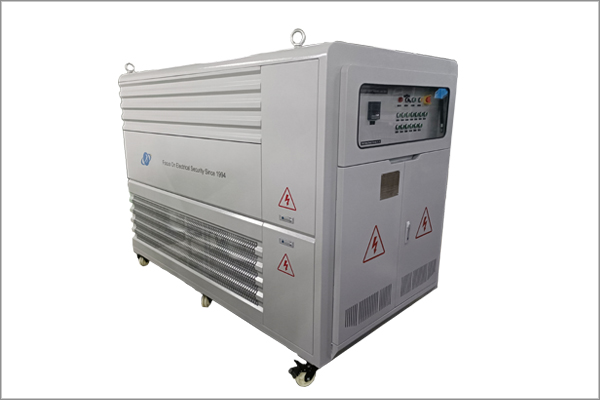In-Depth Analysis of Key Steps in Generator Performance Testing
Time:2025-01-17
Generators, as devices that convert mechanical energy into electrical energy, play a vital role in modern life. To ensure the performance and safety of generators, conducting performance tests on them is crucial. This article will provide an in-depth analysis of the key steps in generator performance testing, helping you better understand and execute this process.
I. Visual Inspection and Connection Check
Before performing performance tests, it is essential to visually inspect the generator and check its connections. The specific steps are as follows:
Visual Inspection: Observe the generator for any mechanical damage, oil or water leaks. Check the tightness of all connection points, the correctness of wiring, and the normal operation of cooling fans.
Wire Connection Check: Inspect all external wire connections of the generator to ensure there are no broken wires, misconnections, or short circuits. These steps provide a preliminary assessment of the generator's condition and lay the foundation for subsequent testing.
II. Startup and Preliminary Testing
After confirming that the generator's appearance and connections are normal, proceed with startup and preliminary testing, including:
Engine Startup: Ensure the generator is properly installed and connected to the power supply, turn off the main power switch, turn on the power, and set the generator to run unloaded. Check if the engine starts at the correct speed as recommended by the manufacturer.
Charging Indicator Observation: After the engine starts, observe if the charging indicator light goes off. If the indicator light remains on, there may be a charging issue.
No-Load Voltage Measurement: Use a voltmeter to measure the generator's output voltage under no-load conditions. Depending on the type of generator, the standard voltage value may vary but should generally fluctuate within a certain range.
III. Measuring Output Voltage and Current
A core aspect of generator performance testing is measuring its output voltage and current to assess its performance.
Output Voltage Measurement: Measure the generator's output voltage at different speeds using a multimeter. Normally, the output voltage at idle should be within a certain range (e.g., 13.8V to 14.8V), and as the engine speed increases, the voltage should stabilize around 14V.
Output Current Measurement: Use a professional clamp-on ammeter to measure the generator's output current under different load conditions. Ensure the generator can provide sufficient current to meet the needs of the vehicle's electrical equipment.
IV. Waveform Detection Using an Oscilloscope
To further evaluate the generator's performance, an oscilloscope can be used to detect its output voltage waveform.
Waveform Detection: Use an oscilloscope to observe the generator's output voltage waveform. A normal waveform should be smooth and stable. If the waveform exhibits abnormal fluctuations or distortions, it may indicate faults in the generator's internal electronic components.
V. Checking Generator System Components
In addition to the basic tests mentioned above, it is also necessary to check the generator's system components to ensure their proper operation.
Voltage Regulator Check: For alternating current generators, check if the voltage regulator is working correctly. Measure the output voltage to determine if the voltage regulator needs replacement.
Rectifier and Battery Connection Check: For alternating current generators, check if the rectifier and battery connections are correct and tight. For direct current generators, check the contact between the rotor and stator.
Noise and Vibration Check: During generator operation, check for any abnormal noises and vibrations. These may be signs of wear or damage to internal generator parts.
VI. Conducting Other Necessary Tests
Depending on the generator's type and actual usage, other necessary tests may also be required.
Insulation Performance Test: Use an insulation resistance tester to measure the insulation resistance of the generator's stator and excitation windings, assessing the degree of insulation aging.
Winding Resistance Test: Measure the resistance of the generator's stator and excitation windings using the DC bridge method to determine if there are open circuits, short circuits, or loose connections in the windings.
Load Test: Test the generator's performance under different load conditions to ensure it operates normally.
VII. Conclusion and Follow-Up Actions
After completing the above tests, assess the generator's performance based on the test results. If the test results indicate faults or performance issues with the generator, take immediate measures for repair or replacement. Meanwhile, to ensure the long-term stable operation of the generator, regular performance testing and maintenance are recommended.
Summary
Generator performance testing is a crucial step in ensuring its performance and safety. By following the steps of visual inspection and connection check, startup and preliminary testing, measuring output voltage and current, waveform detection using an oscilloscope, checking generator system components, and conducting other necessary tests, a comprehensive assessment of the generator's performance can be made, and potential issues can be identified promptly. These steps apply not only to automotive generators but also to other types of generators. When performing performance tests, please ensure compliance with relevant safety regulations and refer to the manufacturer's recommendations.
News Recommendation
-
 2024-09-11
2024-09-11TRIUMPH LOAD EXHIBITING AT Enlit Europe 2024 -BOOTH 7.H08
-
 2023-04-21
2023-04-21TRIUMPH LOAD EXHIBITING AT DATA CENTER WORLD GERMANY 2023-BOOTH F909
-
 2023-04-06
2023-04-06TRIUMPH LOAD EXHIBITING AT ELECTRIC POWER TECH KOREA 2023 – Booth G109
-
 2022-05-05
2022-05-05What is the role of ac load bank for power supply?
-
 2022-05-05
2022-05-05What is the role of the load bank?


